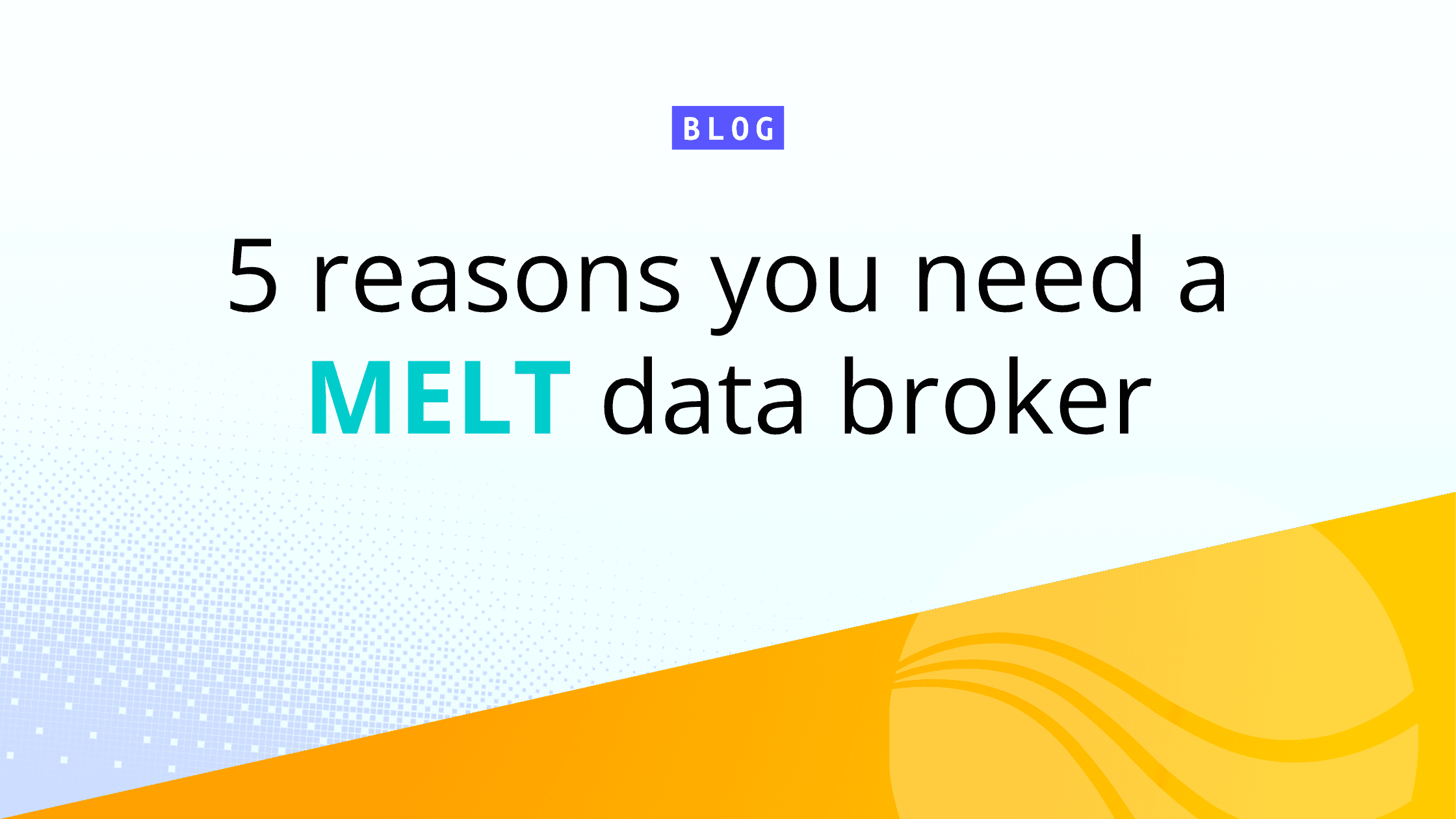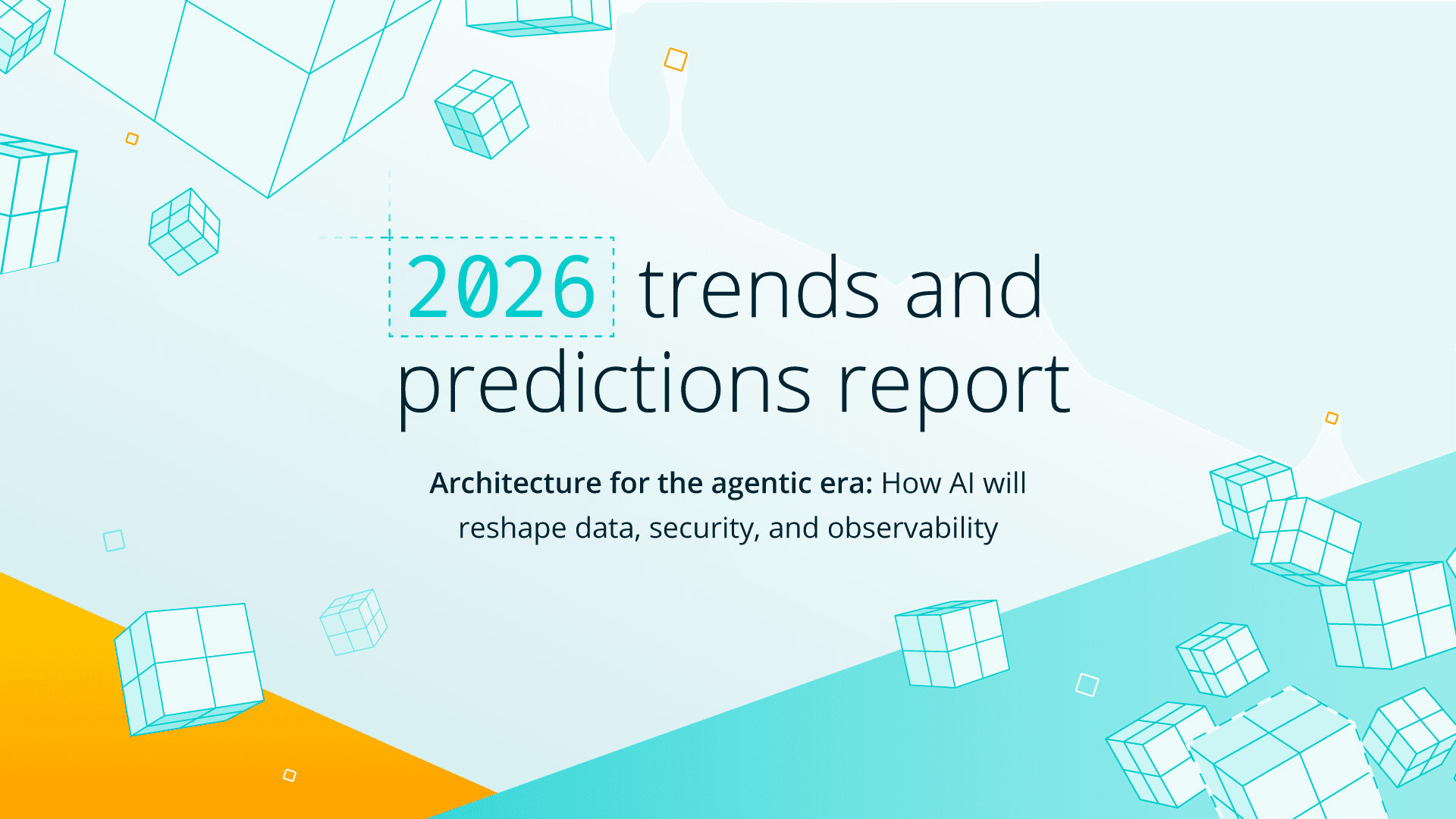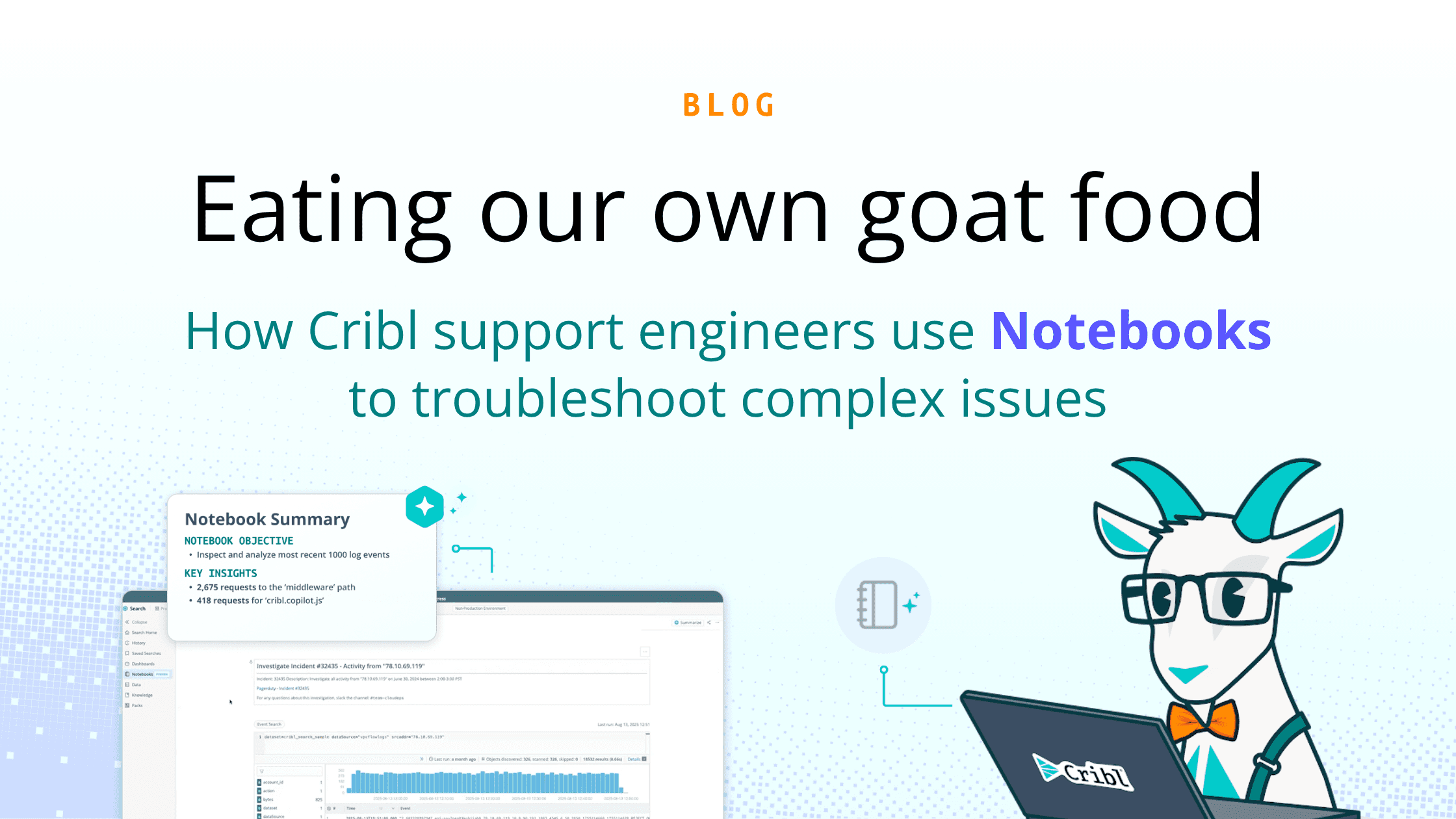Data lakes have emerged as a revolutionary solution in the current digital landscape, where data growth is at a 28% CAGR with no signs of slowing. These repositories, capable of storing vast amounts of raw data in their native format in a vendor-neutral way, offer unprecedented flexibility and scalability.
Unlike traditional data storage systems, data lakes are designed to accommodate the sheer volume, velocity, and variety of data generated in today’s digital economy while limiting vendor lock-in. This adaptability makes them particularly suited for businesses looking to leverage data for strategic insights and decision-making while also controlling costs without introducing new security concerns by dropping data that might be needed in the future.
The core appeal of a data lake strategy lies in its ability to consolidate disparate data types — structured, semi-structured, and unstructured — into a single, centralized repository. This convergence facilitates more robust data analysis and interpretation, enabling businesses to unearth valuable insights previously inaccessible or too complex to derive.
However, the journey to implementing a data lake and harnessing its full potential is not without its challenges—issues such as data governance, quality control, security, and compliance present significant hurdles. Moreover, the need for specialized skills to manage and extract value from data lakes adds another layer of complexity.
This guide aims to equip you with a thorough understanding of data lake strategies, ensuring that you are well-prepared to leverage this powerful tool in the era of big data.
We will delve into their implementation steps, showcasing how businesses can effectively navigate these challenges. We will also highlight the myriad benefits of adopting a data lake strategy, from enhanced data management and analytics capabilities to its agility in responding to market trends and customer needs.
By the end of this journey, you will have a clear roadmap for implementing a data lake, enabling your organization to capitalize on the immense value of your data assets.
Understanding Data Lakes
In the quest to harness the power of big data, the concept of data lakes has become increasingly central in modern business strategies. A data lake is a vast pool of raw data stored in its native format, awaiting analysis and application.
This storage solution is designed to accommodate the explosive growth of data in volume, variety, and velocity, a phenomenon characteristically defining our digital era.
Unlike traditional Enterprise Data Warehouses (EDW), which structure and process data upon entry, data lakes retain the original data state, providing unparalleled flexibility. While EDWs require data to fit into predefined schemas – a process akin to fitting square pegs into round holes for the diverse data types generated today – data lakes embrace the chaos of raw data, storing everything from structured to unstructured data. This more inclusive approach opens up opportunities for more innovative and comprehensive analytics.
The scalability of data lakes is another crucial advantage. They are inherently designed to grow with the organization’s needs, accommodating new data sources seamlessly. This scalability extends to the amount of data stored, the types of data, and how it can be processed. In an EDW, scaling often requires extensive planning and restructuring, but data lakes are built to adapt fluidly to evolving data demands.
Real-world applications of data lakes span various industries, each leveraging this technology to gain a competitive edge. In the finance sector, they enable the analysis of large-scale transaction data, aiding in fraud detection and risk management. Retail companies use data lakes to analyze customer behavior and preferences, tailoring their offerings and marketing strategies accordingly. By centralizing all of the data, teams can layer services on top of the data to extract value.
These examples underscore the versatility of data lakes and their ability to provide deep, actionable insights across different business areas. By offering a comprehensive view of an organization’s data landscape, data lakes allow companies to make more informed decisions, anticipate market trends, and respond to customer needs with unprecedented agility.
In summary, data lakes represent a paradigm shift in data management, offering a more flexible, scalable, and comprehensive approach than traditional EDWs. Their ability to store and manage vast amounts of diverse data positions them as a crucial asset for businesses looking to thrive in the data-driven world.
How a Data Lake Strategy Solves Your Data Growth Problem
In today’s data-driven world, the exponential growth of data poses significant challenges for businesses. Traditional methods of storing data in analysis systems are costly and often result in vendor lock-in. A data lake strategy offers a transformative solution to these problems:
Cost-Effective Storage: Data lakes enable the storage of vast amounts of data at a fraction of the cost of traditional databases or data warehouses.
Flexibility and Scalability: They provide the flexibility to store data in various formats, including structured, semi-structured, and unstructured data, catering to the diverse nature of modern data.Vendor-Neutral Formats: Data lakes store data in vendor-neutral formats, eliminating the risk of vendor lock-in and offering greater control over data.
Enhanced Data Accessibility: They facilitate easy access and retrieval of data, supporting a range of analytical tools and applications.
Future-Proof Data Strategy: By accommodating rapid data growth, data lakes ensure that businesses can continue to store and analyze increasing volumes of data without the need for constant restructuring or significant additional investments.
Adopting a data lake strategy allows companies to efficiently manage their growing data repositories, ensuring that they remain competitive in an increasingly data-centric world.
Comparing Data Warehouses and Data Lakes
When managing and leveraging vast amounts of data, organizations often decide between a data warehouse and a data lake. Both serve distinct yet complementary roles in data management.
Data Warehouse
A data warehouse is a specialized database optimized for analyzing relational data from transactional systems and business applications. It is structured around a predefined schema to facilitate fast and efficient SQL queries. This structured approach enables data warehouses to function as a reliable “single source of truth” for operational reporting and analysis. Data within a warehouse is meticulously cleaned, enriched, and transformed, ensuring high levels of accuracy and consistency.
Data Lake: A Reservoir of Diverse Data
In contrast, a data lake is an expansive storage solution that accommodates relational data from business applications and non-relational data from sources like mobile apps, IoT devices, and social media. The defining characteristic of a data lake is its schema-on-read approach.
Unlike data warehouses, where the schema is predefined, data lakes store data in raw form without a set structure. This flexibility allows for the storage of vast data amounts. It enables organizations to perform various types of analytics, including SQL queries, big data analytics, full-text search, real-time analytics, and machine learning, to derive insights from their data.
The Evolution Towards Integrated Data Management
Many organizations that initially adopted data warehouses are now integrating data lakes into their infrastructure, recognizing the unique benefits and capabilities of each. This integration allows for more diverse query capabilities, accommodating a wide range of data science use cases and paving the way for discovering new information models.
How Do You Deploy Data Lakes in the Cloud?
With their inherent need for extensive performance, scalability, and reliability, data lakes find a natural ally in cloud computing. The cloud environment, characterized by its robust infrastructure, offers many benefits that align perfectly with the demands of data lakes.
9 Advantages of Deploying Data Lakes in the Cloud
Performance and Scalability: The cloud’s dynamic nature allows data lakes to scale resources up or down based on the data volume and processing requirements. This scalability is essential for managing large and fluctuating datasets typical in data lakes.
Reliability and Availability: Cloud platforms provide high reliability with redundant and distributed infrastructure. This ensures data availability, a critical factor for data lakes that must be accessible for timely analysis.
Diverse Analytic Engines: Cloud providers offer a range of analytic tools and engines, enabling varied and complex data analysis tasks. This diversity is vital for extracting the full value from the data stored in data lakes.
Economies of Scale: The cloud’s cost-efficiency, primarily due to economies of scale, makes it an attractive option for deploying data lakes. Businesses can leverage cloud resources without significant upfront investments in physical infrastructure.
Security Enhancements: Unlike common misconceptions, cloud platforms often provide superior security features. With continuous updates and advanced security protocols, data lakes in the cloud benefit from enhanced protection.
Faster Deployment and Updates: The cloud enables quicker setup and deployment of data lakes, significantly reducing operational time for data storage and analysis. Regular feature and functionality updates keep the data lake environment at the forefront of technology advancements.
Elasticity and Flexibility: The cloud offers unmatched elasticity, allowing businesses to adjust their data lake resources in response to changing needs and workloads.
Global Reach and Accessibility: With data centers spread across various geographic locations, cloud-based data lakes offer the advantage of global accessibility, which is crucial for multinational businesses.
Cost-Effectiveness Linked to Usage: The pay-as-you-go pricing model of the cloud links costs directly to usage, ensuring that businesses only pay for the resources they consume.
Challenges with a Data Lake Implementation
Implementing a data lake strategy comes with its set of challenges, each requiring careful consideration and strategic planning to overcome.
Data Volume and Diversity
The sheer volume and diversity of data poses a significant challenge in data lake implementation. Managing different data types, from structured to unstructured, requires robust systems that can handle such variety without compromising performance.
Integration and Architecture Complexity
Integrating a data lake into an existing IT infrastructure demands a complex architectural approach. This complexity stems from the need to ensure compatibility with various data formats and sources and existing data systems and processes.
Data Ingestion and Processing
Data ingestion, the process of importing data into the data lake, can be challenging due to the variety of data sources and formats. Additionally, processing this data to extract valuable insights requires powerful analytics tools and technologies.
Data Accessibility and Usability
Ensuring that the data within the lake is easily accessible and usable by different stakeholders is crucial. This involves implementing user-friendly interfaces and query languages and ensuring that the data is organized and cataloged effectively.
Data Quality and Consistency
Maintaining high data quality and consistency is essential. This involves implementing processes to clean, validate, and standardize data as it enters the lake to ensure that the data is reliable and helpful for analysis.
Security and Privacy Concerns
Data lakes often contain sensitive information, making security and privacy a top priority. Implementing robust security measures, including access controls, encryption, and regular security audits, is essential to protect against data breaches and ensure compliance with privacy regulations.
Cost Management and Optimization
Managing the costs associated with storing and processing large volumes of data is a significant challenge. This includes the direct costs of storage and computing resources and the indirect costs related to management and maintenance.
Technical Expertise and Resource Allocation
The successful implementation of a data lake requires specialized technical expertise. Organizations must train existing staff or hire new talent with the skills needed to manage and analyze big data effectively.
Continuous Monitoring and Optimization
Continuous monitoring of the data lake’s performance and regular optimization of its processes and technologies are essential to ensure it meets the organization’s needs and operates efficiently.
The Role of Technology in a Data Lake Strategy
The rapid growth of data in recent years has rendered traditional data storage solutions increasingly impractical and cost-efficient. According to IDC, data growth is estimated at 28% annually, necessitating the adoption of new technologies to manage this surge effectively. Data lakes have emerged as a vital solution in this landscape, offering a vendor-neutral environment for storing vast amounts of data.
Key to the functionality of data lakes is their ability to integrate with advanced tools like Cribl Search. These tools enable organizations to efficiently search through large data repositories and transfer only relevant search outputs to analysis systems. This approach enhances data handling efficiency and significantly reduces data storage and analysis costs.
In essence, the role of technology in data lake strategy is pivotal in addressing the challenges posed by the exponential growth of data. By leveraging innovative tools and platforms, data lakes allow companies to manage their data more effectively, ensuring they can extract maximum value from their data assets.
How to Build a Data Lake Checklist
Define Objectives and Scope: Identify business goals and determine the scope and scale of the data.
Assess Data Sources: Evaluate internal and external data sources, understanding their formats and quality.
Design Data Lake Architecture: Choose a suitable platform like AWS, Azure, or Google Cloud, ensuring scalability, security, and compliance.
Data Governance and Compliance: Establish data governance policies and ensure compliance with regulations like GDPR and HIPAA.
Data Ingestion and Storage: Implement batch and real-time data ingestion mechanisms and organize data storage into raw, curated, and consumption zones.
Metadata Management: Implement practices for metadata management to facilitate data cataloging and discovery.
Data Processing and Transformation: Set up data processing frameworks and define ETL processes.
Data Quality and Integration: Conduct quality checks and integrate various data sources.
Security and Access Control: Implement robust security measures and define access control policies.
User Training and Adoption: Train end-users and stakeholders to promote organization-wide adoption.
Monitoring and Maintenance: Establish monitoring for performance and usage and maintain the data lake regularly.
Continuous Evaluation and Improvement: Regularly assess and iteratively improve the data lake based on feedback and evolving needs.
Wrap up on Data Lake Strategy
Organizations can effectively manage the complexities of data volume and diversity with a data lake strategy by defining clear objectives, assessing diverse data sources, and designing a robust architecture. Ensuring rigorous data governance and compliance and establishing secure and efficient data ingestion and storage mechanisms are critical steps in this process.
Furthermore, businesses can optimize their data lake implementation by focusing on metadata management, data quality, security, and continuous monitoring, leveraging technology to its fullest potential. The key to success lies in adaptability and a commitment to ongoing evaluation and improvement, ensuring that the data lake strategy remains aligned with evolving business goals and the ever-changing digital landscape.







